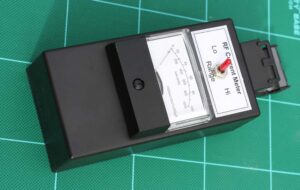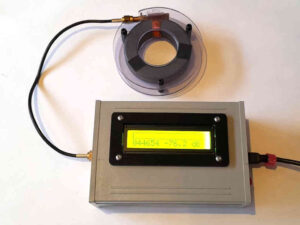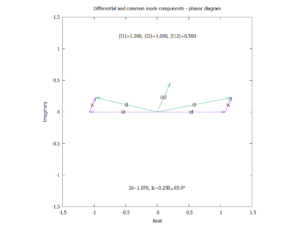One of the very popular topics on ham social media is common mode current, and it seems whilst opinions are presented as fact, there is little sound science in evidence.
In a two wire transmission line, we can get good insight into the state of current balance by measuring three currents at a point along a transmission line:
- I1 in one conductor;
- I2 in the other conductor; and
- I12 being the sum of the currents.
These can be measured using an RF current probe, essentially a current transformer for RF, and in the case of I12, it is measured by placing BOTH conductors through the centre of the current transformer so the flux is due to I1+I2 (not simply |I1|+|I2|). There are other ways to obtain I12, but in concept they work the same as passing both conductors through one current transformer.
With a little high school trigonometry, we can calculate the differential and common mode components of I1 and I2. Resolve measurement of I1, I2 and I12 into Ic and Id is a handy calculator.
Let’s look at some phasor diagrams.
Above is a phasor diagram for the case:
- |I1|=1.2;
- |I2|=1; and
- |I12|=0.5.
It is the magnitude of the green phasors that have been measured, the angles are calculated from those measurements.
Note that we can only calculate the magnitude of the angle of Ic from this data, so there is another possible solution being the -ve of the angle, but that detail is not usually important.
Above is a phasor diagram for the case:
- |I1|=1;
- |I2|=1; and
- |I12|=0.5.
Note that in this case |I1|=|I2|, but Ic is not zero. Yes, that is possible, and some practitioners consider that if |I1|is approximately equal to|I2|, then |I1|=|I2| and more importantly, that Ic is insignificant.
Now these are measurements at a point on a transmission line, and we must remember that both Ic and Id may be and often are standing waves, and possibly (usually) with different phase velocities so measurement at several points is necessary to properly assess common mode current.
The many techniques that depend on simply measuring |I1|and|I2|, including those used by some commercial instruments that purport to measure ‘balance’, are deeply flawed, they are conceived and propagated by people who just do not understand the nature of differential and common mode components of transmission line current.
Conclusions
- Much of the discussion on social media about measurement of common mode current is specious, it appeals to readers who lack the knowledge to recognise it for what it is, especially those influenced by the ‘like’ counts.
- Nevertheless, it is very popular, and in the modern world popularity is held to determine fact.



